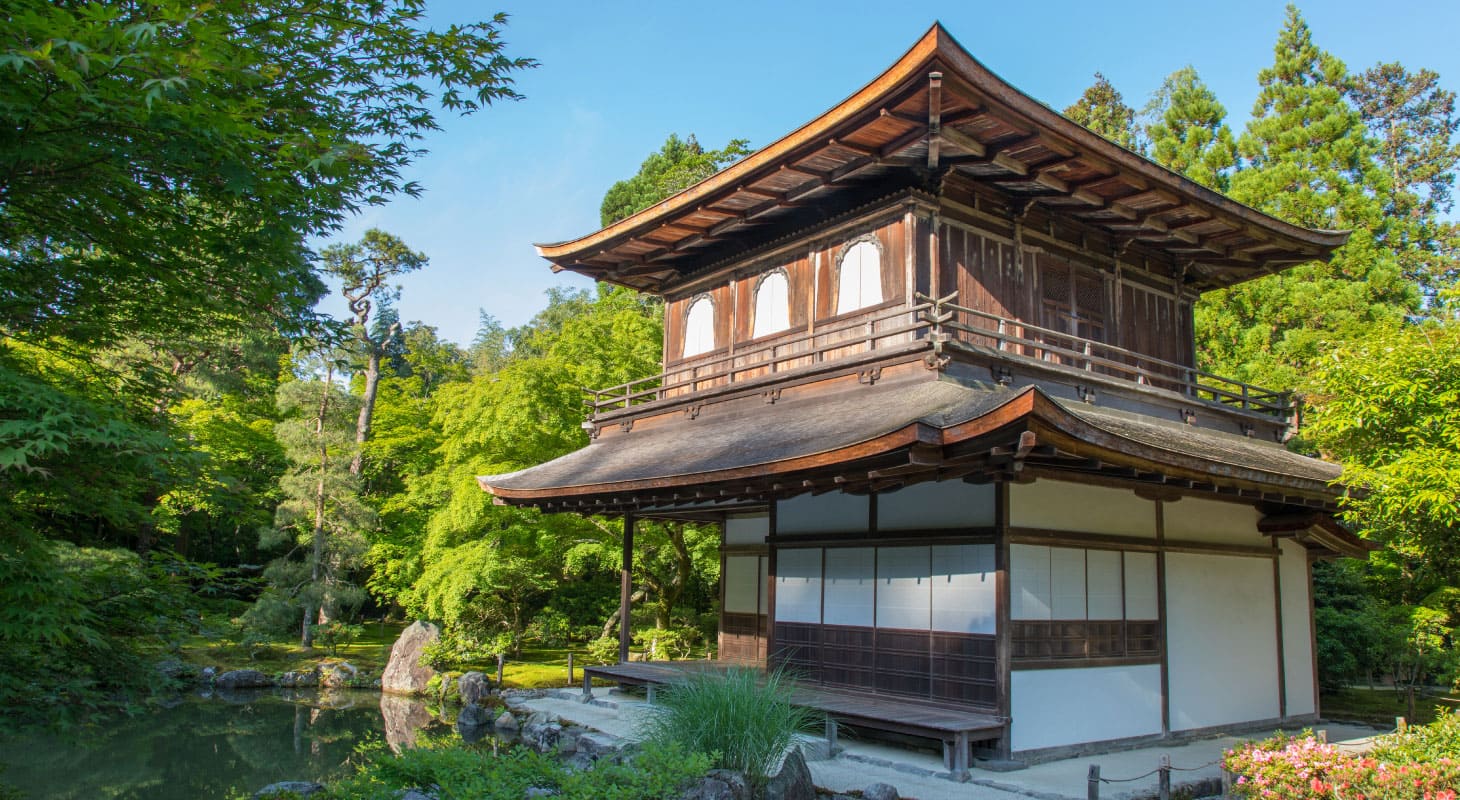Introduction
Ginkakuji (銀閣寺), also known as the Silver Pavilion, is a Zen temple located in the Higashiyama district of Kyoto. Renowned for its unique architecture, exquisite gardens, and rich cultural heritage, this temple attracts visitors from all over the world. Despite its name, the Silver Pavilion isn’t covered in silver like its “brother” Kinkakuji (Golden Pavilion). Instead, it captivates with its understated beauty and profound Zen aesthetics.
Ginkakuji at a Glance
- Location: Sakyo Ward, Kyoto
- Established: 1482
- Main Attractions: Silver Pavilion, Dry Sand Garden, Moss Garden
- Cultural Significance: Birthplace of Higashiyama Culture
- Recommended Visit Duration: 1-2 hours
- UNESCO World Heritage Site: Listed since 1994
Rich Historical Background
Ginkakuji was originally built in 1482 as a retirement villa for Shogun Ashikaga Yoshimasa. Inspired by his grandfather’s Golden Pavilion, Ginkakuji developed its own unique style. After Yoshimasa’s death, the villa was converted into a Zen temple.
As the retirement home of an art-obsessed shogun, Ginkakuji became a center of contemporary culture, known as the Higashiyama Culture. Unlike the Kitayama Culture, which remained limited to Kyoto’s aristocratic circles, the Higashiyama Culture had a broad impact on the entire country. Arts developed and refined here include the tea ceremony, flower arrangement, Noh theater, poetry, garden design, and architecture.
Main Attractions of Ginkakuji
1. The Silver Pavilion (Kannonden)
Despite its name, this two-story building isn’t covered in silver. Some believe the name was given to contrast with the Golden Pavilion, while others say moonlight reflecting off its once black-lacquered exterior gave it a silvery appearance. The pavilion is one of only two original buildings remaining and houses a statue of Kannon, the Buddhist goddess of mercy. However, the interior is not open to the public.
2. The “Sea of Silver Sand” Dry Garden
This meticulously maintained dry sand garden features a large sand cone known as the “Moon Viewing Platform.” The garden’s design is both simple and profound, embodying the essence of Japanese landscape art.
3. Togudo Hall
The Togudo is Ginkakuji’s other surviving original building, famous for its 4.5-tatami mat study room. This is considered the oldest extant example of Shoin architecture, which greatly influenced the design of Japanese rooms in later periods.
4. Moss Garden
Beyond the buildings, visitors can enjoy a beautiful moss garden. This area features ponds with islands and bridges, streams, and various plants, creating a vivid natural landscape.
5. Viewpoint
Climbing the path up the hill behind the buildings offers a panoramic view of the entire temple grounds and Kyoto city beyond, providing an excellent spot for photography.
Best Time to Visit
Ginkakuji is beautiful year-round, but these seasons are particularly recommended:
- Spring (March-May): Cherry blossoms in full bloom
- Autumn (October-November): Vibrant fall colors and pleasant weather
- Winter: Occasionally, snowfall creates a stunning silvery landscape
Getting There
- Take bus number 5 or 17 from Kyoto Station, reaching Ginkakuji in about 35-40 minutes. One-way fare is 230 yen.
- Alternatively, walk along the Philosopher’s Path from Nanzenji Temple, which takes about 30-45 minutes.
Opening Hours and Admission
- Opening Hours:
- March to November: 8:30 AM – 5:00 PM
- December to February: 9:00 AM – 4:30 PM
- Open all year round
- Admission: 500 yen for adults
Visitor Tips
- Please observe temple rules, maintain silence, and refrain from touching artifacts.
- Consider purchasing a guidemap or audio guide at the entrance for a better understanding of each site’s history and significance.
- Photography enthusiasts should note that some areas may prohibit picture-taking. Look out for signs.
- Wear comfortable walking shoes as you’ll be walking around the grounds and climbing a small hill.
- Consider combining your visit with a stroll along the Philosopher’s Path for a more comprehensive Higashiyama experience.
Official Website
Conclusion
Ginkakuji is not just a historic temple; it’s a microcosm of Japanese art and culture. Its architectural beauty, exquisite gardens, and cultural depth are truly awe-inspiring. Whether you’re a history buff, a garden art enthusiast, or simply seeking a place of tranquility, Ginkakuji is worth visiting. Let’s step into this cultural treasure of Kyoto, experience the serenity of Zen, and appreciate the charm of traditional Japanese aesthetics.

Leave a Reply